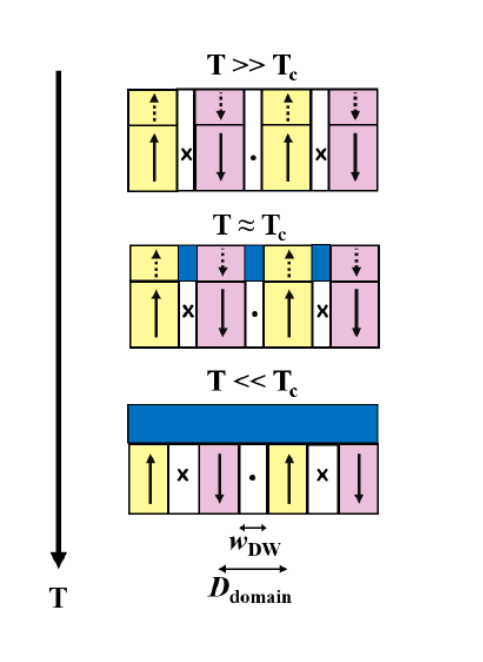PC3-8
Interplay of proximity effects in Nb/FePd heterostructures: domain-superconductivity, spin-triplet Cooper pair generation, and the impact on the ferromagnet
Dec.1 17:00-17:15 (Tokyo Time)
Jülich Centre for Neutron Science (JCNS) and Peter Grünberg Institut (PGI), JARA-FIT, Forschungszentrum Jülich GmbH, 52425 Jülich, Germany 2 Ernst Ruska-Centre for Microscopy1
Ernst Ruska-Centre for Microscopy and Spectroscopy with Electrons and Peter Grünberg Institute (PGI-5), Forschungszentrum Jülich GmbH, 52425 Jülich, Germany2
Jülich Centre for Neutron Science (JCNS) at Heinz Maier-Leibnitz Zentrum (MLZ), Forschungszentrum Jülich GmbH, Lichtenbergstraße 1 85748 Garching Germany3
National Institute of Standards and Technology, Gaithersburg, Maryland 20899, USA4
Proximity effects in superconductor(S)/ferromagnet(F) thin film heterostructures are highly topical issues due to their potential application in superconducting spin valves or fluxonic devices [1, 2]. Superconducting, electric, and magnetic properties can be controlled by an external applied magnetic field [3] and emerge for example as stray-field generated domain-superconductivity or spin-triplet superconducting correlations.
These two phenomena arise from fundamentally different origins but can still be studied within one heterostructure system. Our goal is to investigate their interplay and tunability by an external magnetic field, and to obtain information on the inverse proximity effect: a change of magnetization of the F-layer. We use a heterostructure system of Nb(S)/FePd(F) with varying strength of perpendicular magnetic anisotropy and a lateral domain structure, grown by molecular beam epitaxy.
On the one hand, macroscopic magnetoelectric transport measurements reveal a confined superconducting state due to the stray fields of L10-ordered FePd. On the other hand, direct proximity effects at the Nb/FePd interface with a non-collinear magnetization presumably lead to the generation of spin-triplet Cooper pair components with long penetration depth within the F-layer [4]. Grazing-Incidence Small-Angle Neutron Scattering (GISANS) probe exchange mechanisms on the microscopic scale and reveal a change in the ferromagnetic domain pattern by an onset of domain-wall-superconductivity (see Fig. 1).
Figure 1: Sketch of Domain-Wall-Superconductivity near Tc (blue areas) in Nb/FePd, and the subsequent transition into a complete superconducting state accompanied by a broadening of the domain wall width wDW and constant domain width Ddomain.
[1] J. Linder and J. W. A. Robinson, Nature Physics, vol. 11, pp. 307-315, Apr 2015.
[2] A. M. Kadin, Journal of Applied Physics, vol. 68, p. 5741, Dec 1990.
[3] J. Y. Gu, et al., Physical Review Letters, vol. 89, Dec 2002.
[4] A. Stellhorn et al., New Journal of Physics, vol. 22, p. 093001, Sep 2020.
